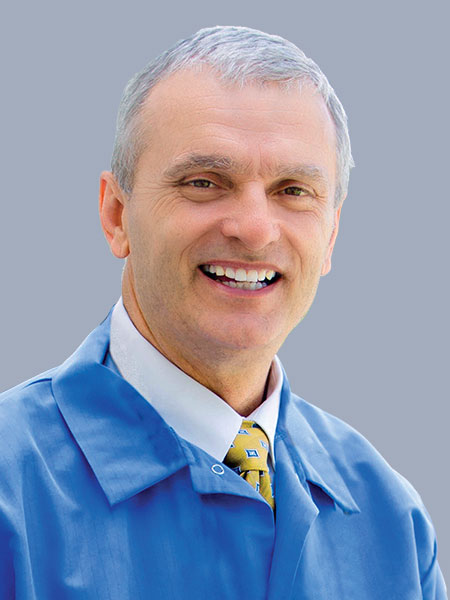Interview with Michael R. Dorociak, DDS, MAGD
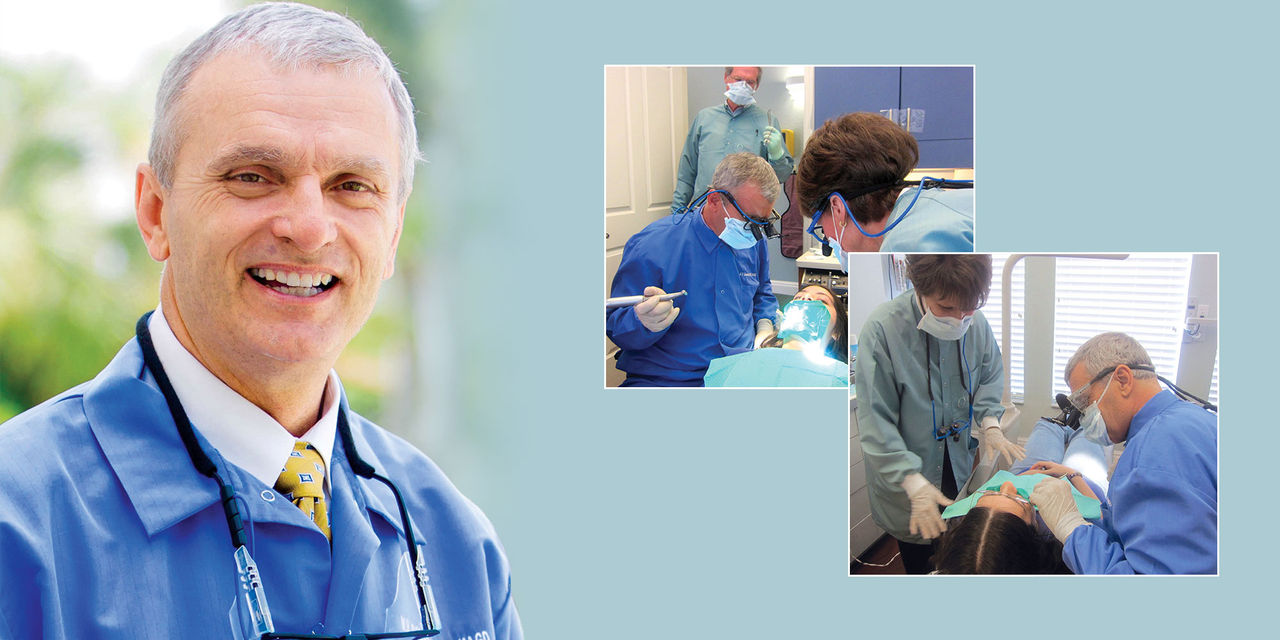
Dr. Michael R. Dorociak is chairman of the board, project director and clinical evaluator for the Gordon J. Christensen Clinicians Report®. He is an adjunct clinical professor at the University of Florida’s AEGD residency program, and he also operates a full-time, family-based private practice in Sarasota, Florida, that provides a full range of dental services. In this interview, Dr. Dorociak discusses the importance of continuing dental education, how “segmental dentistry” plays a central role in his practice, and what he foresees in dentistry’s future.
DR. NEIL PARK: Tell me a little bit about yourself personally — where are you from originally?
DR. MICHAEL DOROCIAK: I grew up in Buffalo Grove, Illinois, a suburb just outside of Chicago, and I went to school — undergrad — at the University of Notre Dame.
NP: Great school.
MD: It’s a wonderful school. It has a strong sense of community. After graduation, I attended the University of Illinois at Chicago College of Dentistry to obtain my dental degree.
NP: Another great school. So how did you choose dentistry as your profession?
MD: I knew I wanted to get into the health care field, but I wasn’t sure where I was going to end up. I was very fortunate to have chosen dentistry. I was not like a lot of people who had family members as part of the dental profession. I basically chose it because I wanted to help people, and I was attracted to the personal and professional freedom dentistry offers.
NP: So you did an intellectual analysis of which professions would suit you?
MD: Yes. Finding the answer to anything we do in life comes from hard work and burning desire. It was once said: “I’m a lucky man. I find the harder I work, the luckier I get.”
NP: That’s certainly a good piece of wisdom. Did you come to Sarasota right out of school?
MD: I went down to Miami to do a residency at Miami Children’s Hospital, where I did some rotations through Jackson Memorial Hospital. I ended up being fortunate enough to join a group practice here in Sarasota, where I practiced for about five years before I opened my own practice in 1992.
NP: So tell me a little bit about your practice. How many staff members do you have?
MD: We have 14 members on our dental team. We are very blessed because we’re able to practice dentistry that is reflective not only of our personalities, but also of the level of care we want to provide. Our practice is based on a mantra that was taught to me by Dr. Gordon Christensen: “Faster, easier and higher quality.”
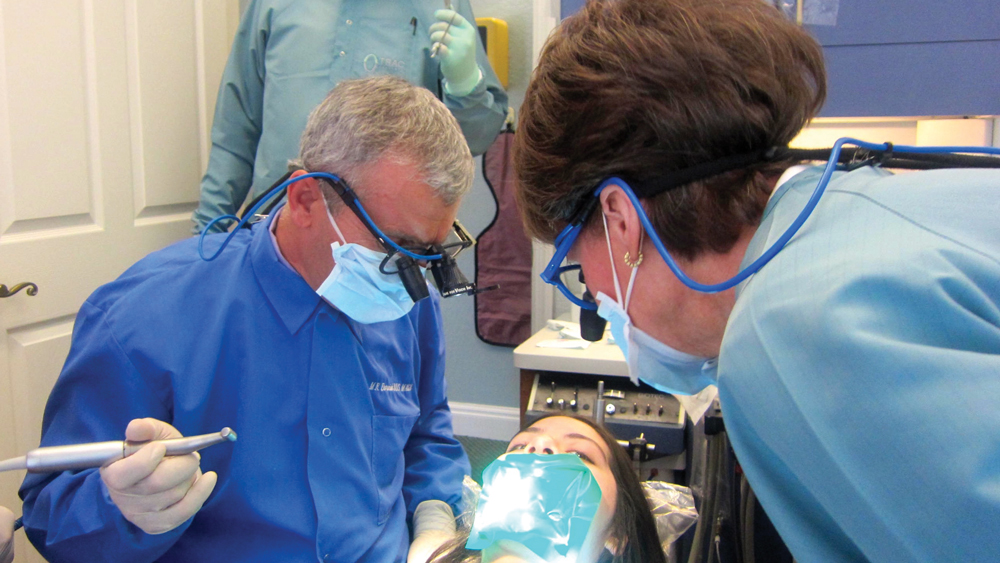
Dr. Michael Dorociak works alongside Dr. Rella Christensen on many long-term studies for TRAC Research and the Gordon J. Christensen Clinicians Report, including research on resin-based composites and zirconia.
NP: That’s a good way to go.
MD: Absolutely. We are very much a family-based practice where we try to serve the community as a whole.
NP: You did some extra training in pediatric dentistry. Is that a key part of your practice?
MD: Pediatrics was a key building block and remains an important part of my practice because, typically, when a family selects a practice you’d see the children first, then the mom, and finally Dad would show up with a toothache or similar emergency.
NP: And many of our colleagues are not really enamored with treating children.
MD: That can be the case. But to anybody who’s interested in building their practice, treating children can be an important component. We even have a separate arcade game room for kids where we often find the parents joining in on the fun. It is sometimes important to follow your heart. When I was designing my practice, the consultant looked at that space and said that it would make a great hygiene operatory. I said, “No — it would make a great game room.”
NP: That’s interesting. When I came out of dental school, I went into the Public Health Service. I had an opportunity there to treat lots of kids, but there were some skills related to patient management that I didn’t have, that I had to go and get. Do you have any recommendations for dentists who want to get better in pediatric dentistry and behavior management?
MD: Contact one of your local dental schools — a lot of their pediatric departments have expanded training in those areas. The University of Florida has a mini-residency for general dentists in pediatric dentistry. Treating children starts with using painless procedures and changing a child’s perception of the experience. No matter what the discipline, continue expanding your education. As Leo Buscaglia said, “I want to become more and more so I have more to give.” The more you know, the more you can provide. To offset increasing competition and decreasing revenues, dentists can use continuing education to expand their services. For example, in our practice we’ll do everything from placing and restoring implants, to root canals, to oral surgery and fixed prosthodontics.
No matter what the discipline, continue expanding your education. As Leo Buscaglia said, ‘I want to become more and more so I have more to give.’
NP: So you’re the super-generalist, right?
MD: Yes. I believe dentistry itself is the specialty. As a branch of medicine, we can find the procedures we are comfortable with and provide them with the highest level of care. This is an important component to fighting off the challenges dentists are facing. Another trend may be the move toward group practices that can offset the high cost of technology and allow for expanded services. Plus, patients don’t like to go anywhere else. A very common phrase from my patients is, “Can’t you do it?” Work with specialists who understand this. They, in fact, will get more referrals. For example, I place implants in healthy patients with good bone. My specialist gets all the rest. He is always available to me, as I am to him.
NP: Exactly. It’s interesting, because I’ve seen your practice continue to grow even when some of our colleagues are facing economic headwinds. Do you feel that’s one of the important things you’ve done — trying to keep many of these procedures in your office?
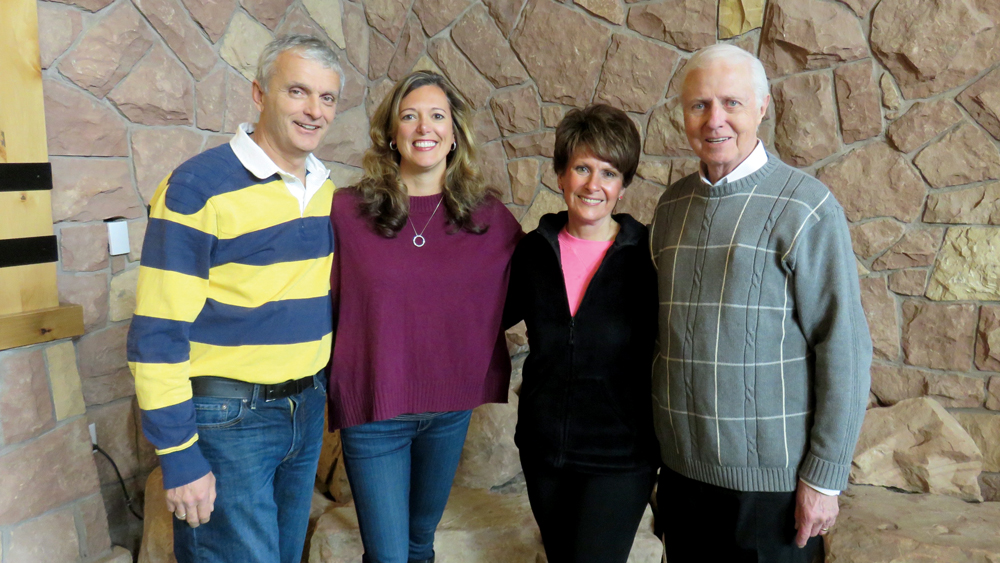
Dr. Dorociak and his wife, Gillian, visit with Drs. Rella and Gordon Christensen during a get-together. Dr. Dorociak serves as chairman of the board, project director and clinical evaluator for the Gordon J. Christensen Clinicians Report.
MD: Absolutely. Like I said, patients like to stay in your practice. It also helps to expand your potential revenue sources. This can essentially recession-proof your practice. Yet, it also requires getting back to the basics. One of the basic philosophies in my office reflects what an older dentist told me when I first started practicing. He said, “Give them good, honest treatment and they’ll come back.”
NP: That’s the secret.
MD: We do that in combination with a whole list of bullet points for practice success, such as what I call “low-budget front end.” When a new patient comes in, we’ll charge a basic comprehensive examination fee that is well within his or her budget and shows what can be done in his or her mouth. Procedures such as whitening are done at a minimal fee. Our goal is to make them patients for life, not just for the moment.
NP: So you don’t try to wow them with a five-figure price tag?
MD: Absolutely not. My concern is that many courses teach us how to treat the upper 5 percent of patients, when 95 percent of the population needs good dentistry done but can’t afford those price points. The median household income in the U.S. is around $59,000, and studies indicate patients will spend about 10 percent of that on discretionary items. So I think an average treatment plan presented to a patent with significant needs should be somewhere around $5,000–6,000.
My concern is that many courses teach us how to treat the upper 5 percent of patients, when 95 percent of the population needs good dentistry done but can’t afford those price points.
There is a term I call “segmental” or “piecemeal dentistry,” where you restore a patient’s mouth, but you do it over a period of time — often one quadrant at a time over a period of years. In addition, there are three words that changed my practice: “mandatory,” “elective” and “future.” Patients understand this. As part of a treatment plan presentation, we will tell a patient what’s mandatory. For example, if they have an abscess associated with a tooth, that’s mandatory — we will do the root canal and get the tooth restored. However, most esthetic procedures along with the replacement of old intact restorations are elective, and patients need to understand the difference. Some of my most common “second opinion” new patients are those coming from another dentist who said they “needed” many crowns. I will then help the patient in determining what is mandatory and what is elective.
I will make a bold statement here: I believe that the majority of dental breakdown is slow. For the most part, we don’t have to do everything right away. Dr. Earl Estep was a dentist out of Texas who taught me the term “plant the seed.” That is basically allowing the patient to understand what needs to be done now and what can be done in the future. If you go slow and plant the seed, you will have a whole generation of patients who are ready for and easily accept dental treatment sometime in the future.
NP: You mentioned Drs. Earl Estep and Gordon Christensen. Any other mentors who you can name who’ve been influential to your career?
MD: There was Dr. Frank Collins, from the University of Florida. He inspired me with his love of the profession and his practical approach to treating patients. Early in my career, I wanted to impress Dr. Collins by presenting this elaborate treatment plan involving one tooth. After a quick look at the radiograph, he looked at me and said, “Dorociak, take the darn tooth out.” He taught me to be practical and always act in the patient’s best interest. Dr. Gordon Christensen has been the single most influential teacher and mentor in my career. In fact, the Latin derivative of “doctor” means “to teach.” He certainly has inspired me to reach heights that I never thought I would be able to achieve. When you get to know Gordon personally, you’ll understand that there’s one word that defines him: integrity. To me, that means honesty and doing the right thing. His commitment to the profession and to helping dentists throughout the world is incredible. He once said to me: “Mike, I had a couple of options when I first started practicing. I could have a practice where I could influence a few thousand patients, or I could teach thousands of dentists who each have a few thousand patients in their own practices. I could then influence the profession as a whole.”
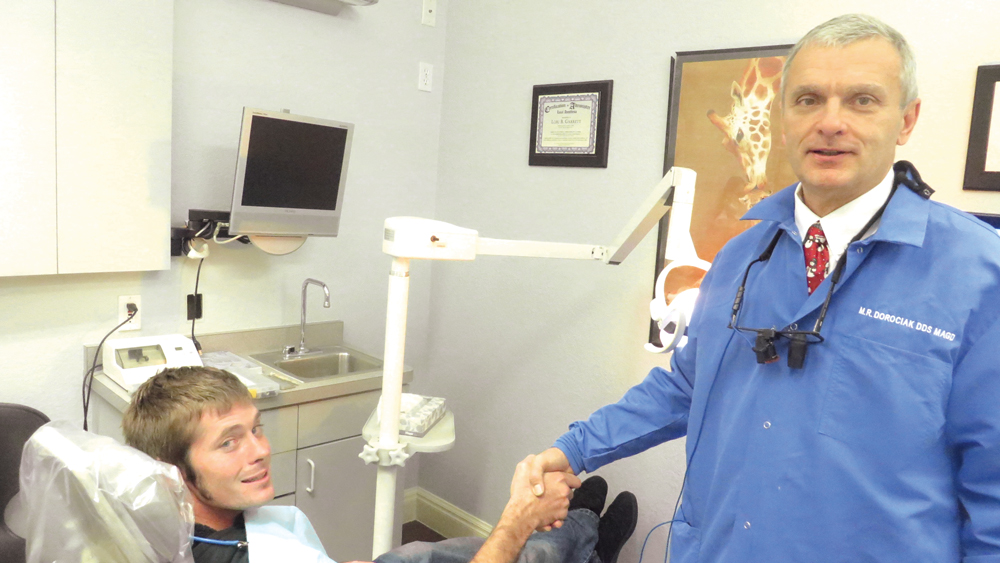
Dr. Dorociak is dedicated to serving his patients. He believes there will always be room for quality private practices as long as clinicians remember to empathize with their patients and treat them like family.
NP: That’s very true. Have you also had the chance to work with Dr. Rella Christensen?
MD: Absolutely. Dr. Rella Christensen is amazing. She has dedicated herself to something that’s very hard for all of us to do: long-term research, especially in vivo research. It’s looking at how products or techniques are holding up over a long period of time, and it takes quite a bit of dedication to commit yourself to projects like that. She’s done research ranging from the use of the laser in periodontics, to the remineralization of teeth, to the study of full zirconia crowns, including BruxZir® Solid Zirconia. Her studies tell us how these materials, products or techniques stand the test of time.
NP: Have you had the opportunity to be involved in any of this clinical research?
MD: Yes. I am involved in some of the long-term studies with patients in my own office involving resin-based composites, glass ionomers and zirconia, including full zirconia and translucent zirconia. In addition, Dr. Rella has come to my office in Florida, where we’ve done in vivo research on patients. We often joke about this — to show you her dedication, one day we started at 7 a.m. and ended at midnight working nonstop on patients, not even taking breaks to eat. At one point we even thought of answering the phone by saying, “Mike’s All-Night Dental.” As you are aware, I’m chairman of the board for the Gordon J. Christensen Clinicians Report®. I am also a project director and am involved in the month-to-month genesis of the Report, where we oversee, write and provide clinical input for many of the projects and articles. I am actively involved in much of the research that’s going on.
NP: Do you work with a large group of private practitioners to generate this research?
MD: Yes. We have over 450 evaluators around the world evaluating products and techniques in their own offices. They report back to us on products that live up to their claims and those that do not. Only one out of four or five products we test actually lives up to its claims. Likewise, we will survey thousands of dentists on any pertinent topic to determine what is working in their own practices and what is not. Clinicians Report is basically made up of two separate entities. One is called TRAC (Technologies in Restoratives and Caries) Research, which is Rella’s group — this is the human studies division of CR where they do the long-term research on patients. This is a part of dental research that is sorely lacking, and Dr. Rella and her team serve to help fill that void. The other component involves about 40 in-house scientists, engineers and support staff who do the short-term research and testing often using the initial information provided by the clinical evaluators. We can be considered the “Consumer Reports of dentistry” because we offer unbiased information with only one goal: serving dentists. We provide state-of-the-art research and report our findings back to the profession. We remain the only independent nonprofit testing group funded solely by dentists. I encourage anyone not familiar with our organization to visit our website at cliniciansreport.org and subscribe to the Report. Dentists can attend one of our annual “Dentistry Update” lectures given by Gordon or myself all over the country and take home volumes of information that they will be able to use on Monday morning in their own offices.
Gordon J. Christensen Clinicians Report can be considered the ‘Consumer Reports of dentistry’ because we offer unbiased information with only one goal: serving dentists.
NP: So you’ve had a unique perspective on new materials and procedures that are changing dentistry. What do you think will be dominant going forward? For example, the milled monolithic ceramics have been a huge trend. What’s your thought on how that’s going to play out in the future?
MD: I think the all-ceramic crowns, especially the full-zirconia milled ceramics, have marked one of the biggest paradigm shifts in dentistry. It’s probably second only to the air rotor, which came about in 1959-60, where you saw a dramatic change of the profession converting to the air rotor from the belt-driven within months. We have all seen the impressive change to the all-ceramic materials, specifically with full zirconia. What I’ve discovered about BruxZir zirconia — and what is confirmed by Rella’s research — is that it is the most durable of all the white materials, tolerates bruxing and clenching, and requires minimal preparation. Dr. Rella has also demonstrated that the wear to the opposing dentition is not overly abusive. In fact, it is the glaze that causes the wear. It is also remarkable that it’s retained the same reasonable cost over the years.
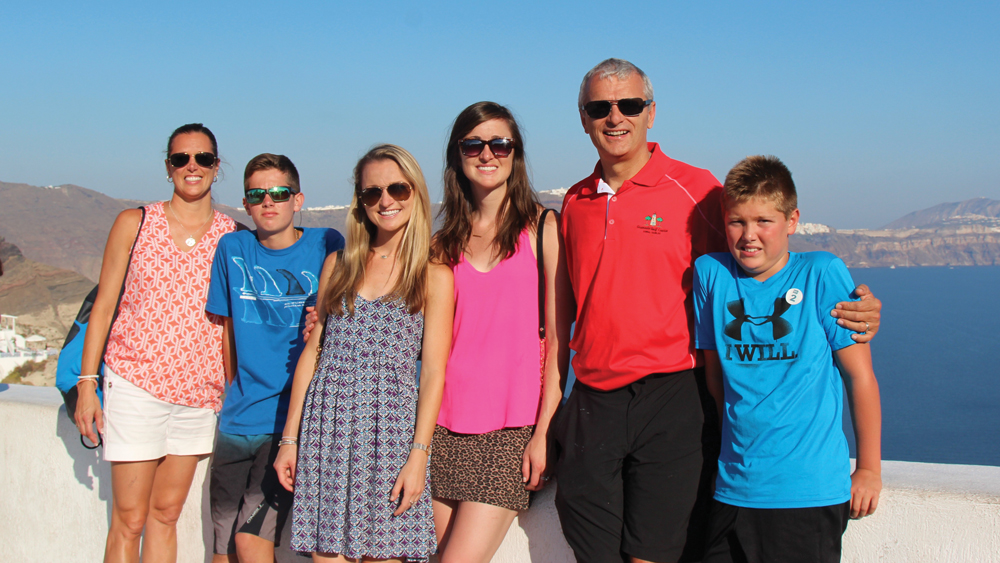
Dr. Dorociak’s love of dentistry runs in the family. His daughter Jackie recently completed a residency program at the University of Florida, and is now a practicing dentist.
NP: Absolutely. It’s also changed the lab business just as much as it’s changed clinical dentistry, and it’s put the challenge to the laboratory to produce restorations at a high quality and in an efficient manner.
MD: Yes. In addition, one of the unique properties of full zirconia, which Dr. Rella helped demonstrate, is the concept of transformation toughening.
NP: Can you explain that?
MD: Sure. As the zirconia undergoes stress, it expands slightly, and this essentially cuts off the cracks. So the cracks do not propagate with the full monolithic zirconia. We’re literally seeing no chips, cracks or breaks with full zirconia, including BruxZir zirconia.
NP: Right. While feldspathic porcelain would eventually chip or crack based on the propagation of these microfractures.
MD: Absolutely. In my opinion, here is the state of the art for all-ceramic crowns at this time. For molars, I would use full zirconia. And stick with a well-known brand like BruxZir zirconia — not all zirconia is alike. It is showing properties that we loved about gold.
For premolars, I would most likely use lithium disilicate (IPS e.max® [Ivoclar Vivadent; Amherst, N.Y.]). Lithium disilicate requires more reduction for strength. Glidewell’s version of that is Obsidian® lithium silicate, which is a very esthetic material. I’d also consider full zirconia for a premolar with no esthetic challenges or a zirconia-based restoration that has a ceramic overlay. In the anterior region, my crown of choice would be lithium disilicate, followed by a zirconia-based restoration with a ceramic overlay. We are beginning to take a solid look at the new higher translucency zirconia, such as BruxZir Anterior. I think it is showing some promise as long as we understand the limitations of the material. Translucent zirconia requires the dentist to follow the manufacturer’s recommendations for preparation design and to avoid excessive chairside adjustments. The preparation design is different from full zirconia. Our research is showing problems with not enough tooth reduction, as well as with chairside adjustments. The most common error with fixed restorative preparations as seen in labs and confirmed in our own research is lack of occlusal reduction. Be cautious with translucent zirconia at this time. This “second-generation” zirconia will soon be surpassed by third- and fourth-generation zirconias. Stay with the BruxZir Full-Strength on molars or on multiunits, especially when minimal tooth preparation is desired.
NP: Do you do any PFMs anymore?
MD: Yes. I think that PFM is dying, but we don’t have to execute it by midnight. There are still some indications for PFMs. One of them is replacing a single crown in a patient who has a good number of PFMs, because you want to have the appropriate shade match and opacity. If you want to do attachments, or for many long-span bridges, PFM is the best choice. A good lab can still make PFM look wonderful.
If you want to do attachments, or for many long-span bridges, PFM is the best choice. A good lab can still make PFM look wonderful.
NP: Have you tried Obsidian Fused to Metal?
MD: Yes, we have, and I think it’s showing a lot of promise. We’re getting an excellent fit with very good esthetics.
NP: Have you noticed that the metal is fabricated in a completely different way? It’s a laser-sintering process that actually prints the metal substructure. So hopefully you’re getting a much better-fitting metal coping as well.
MD: Yes, it was described to me as being a laser printer that actually takes a metal powder and uses a laser to start forming the 3D process. I was amazed by the whole technique. The Obsidian lithium silicate is fused to metal, and from my understanding, it’s showing in early studies to be stronger than PFM.
NP: Absolutely, because there’s a much lower level of porosity in the metal, and of course you don’t have any of the dimensional changes that are associated with casting.

Dr. Dorociak maintains a full-time private practice in Sarasota, Florida, and brings his clinical expertise to the Gordon J. Christensen Clinicians Report.
MD: We are getting accurate margins with superior esthetics. This has been a whole new change in PFMs.
NP: Exactly. Mike, I believe you have a daughter who is a practicing dentist.
MD: Yes. My daughter Jackie recently completed an AEGD residency program with Dr. Tom Porter at the University of Florida, and now practices on the east coast of Florida.
NP: Congratulations! That’s really wonderful.
MD: Thank you.
NP: So clearly you’re bullish on the future of dentistry and private practice. Where do you think we’re going over the next five, 10 or 20 years?
MD: Dentistry will be facing many challenges in the future. But I believe there will always be room for a high-quality practitioner who is dedicated to serving his or her patients. One of our practice’s favorite sayings is, “It’s not about the teeth.” It’s about treating the patient as a whole and taking the time to listen. I heard a quote recently that resonates in my heart: “Listen. For when an old man dies, a library burns to the ground.” I still ask a simple question when working on every patient that simplifies all of my treatment plans: “What would I do in my own mouth given that patient’s time, desires and financial status?” With the increasing numbers of students graduating from dental school and their associated high debt, the growth of corporate dentistry will continue. However, there will always be room for both corporate dentistry and quality private practices. Third parties and their declining reimbursements remain one of the most significant challenges our profession faces, along with the growth of offshore dental laboratories. That is why I am glad that dental laboratories like Glidewell remain committed to serving the dental profession. I remain optimistic about our future. According to a recent U.S. News & World Report article, we have the best job in the U.S.!
NP: Thanks, Mike. I appreciate you sharing your thoughts here, as well as all of the work you’re doing for the future of dentistry.
MD: Thank you, Neil, for all the good work you and Glidewell are doing for our profession.



